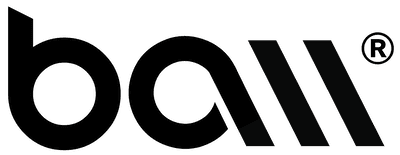|
Getting your Trinity Audio player ready...
|
You’re steering a ship across unpredictable waters. Your compass (the business plan) is solid, and your crew (the team) is ready. But the tides? They’re erratic. One moment, the wind is at your back, and the next, you’re battered by relentless waves.
Sound familiar? If you’re an entrepreneur or business leader, this isn’t just a metaphor. It’s your reality. The markets shift. Generational priorities evolve. Economic climates swing from sunny optimism to stormy recessions. Chaos seems inevitable.
But what if it’s not random. What if beneath the surface of this turbulence are hidden rhythms, cycles of behaviour, opportunity, and change? Economic forces like expansions and contractions mirror the tides, while generational dynamics create cultural waves that dictate consumer behavior and leadership demands.
Two frameworks provide a map to these rhythms: William Strauss and Neil Howe’s generational theory from their book The Fourth Turning and Victor Zarnowitz’s business cycle theory from his book Business Cycles: Theory, History, Indicators, and Forecasting. By understanding these patterns, you gain an edge, because while you can’t control the waves, you can learn to ride them.
If someone told you society resets itself every 80-100 years like a glitchy smartphone, you might roll your eyes. But Strauss and Howe’s The Fourth Turning makes a convincing case that human history is governed by predictable cycles of change, each spanning about a century. They call these cycles saecula (latin, for a long time), and within each saeculum (again, latin, for time roughly equal to the potential lifetime of a person), society moves through four stages, or turnings, like a season for every generation.
Each Turning has its own distinct flavor:
-
The High: Picture the 1950s. Institutions are strong, optimism is high, and people rally around collective goals like buying homes, starting families, and embracing suburban bliss. This is when everything feels shiny and wholesome (cue vintage Coca-Cola ads). During a High, businesses that emphasize stability, tradition, and reliability thrive. Think of major infrastructure projects or industries that support community building, like housing and education
-
The Awakening: Then the kids grow up and start asking tough questions. Think the 1960s and ’70s: civil rights movements, counterculture, and people telling “The Man” to shove it. Institutions get challenged, and everyone’s searching for deeper meaning – often while wearing tie-dye. Yeah, tie-die is in again today. At least according to folks on Instagram. Products and services that celebrate personal freedom and self-expression resonate during this phase. From independent films to organic food movements, industries catering to individuality flourish.
-
The Unraveling: The idealism fades, and the cracks start to show. Cue the 1990s and early 2000s, when trust in institutions plummets, and society becomes more fragmented and self-absorbed. Remember when grunge music was cool, and everyone was too ironic to care? That’s peak Unraveling. People seek alternatives to failing institutions. Startups and disruptors flourish by addressing disillusionment with transparency, authenticity, and innovation.
-
The Crisis: Finally, society faces an existential challenge: a war, an economic collapse, or a pandemic. This is the reset button, where everything breaks down and gets rebuilt. Think the Great Depression and World War II, or where we are right now with the aftershocks of COVID-19. Crises create opportunities for problem-solvers. Companies that address urgent needs, from technology to healthcare, can define the future. Think of Zoom during the pandemic or renewable energy solutions in today’s climate crisis.
Strauss and Howe argue that within each Turning, four generational archetypes emerge, each with its quirks and roles:
- Prophets (Idealists, Boomers): Born during The High, Prophets are the idealistic, values-driven leaders who dominate during Crises. They’re the “visionaries” but also the ones who gave us avocado toast and real estate bubbles.
- Nomads (Reactives, Gen X): The latchkey kids of the Awakening, Nomads are skeptical, resourceful, and allergic to authority. They’re the people who roll their eyes at team-building exercises and quietly fix everything during the Crisis.
- Heroes (Civics, Millennials): Born during the Unraveling, Heroes are the team players who take on Crises with a group-first mentality. They’re the ones launching climate change campaigns while still figuring out how to pay off student loans.
- Artists (Adaptives, Gen Z): Born during the Crisis, Artists are sensitive and adaptive, growing up with both helicopter parenting and social media pressure. They’ll bring the balance and emotional intelligence we’ll desperately need after everything implodes.
Understanding these archetypes helps you tailor your leadership style, marketing strategies, and business positioning to align with generational priorities.
Victor Zarnowitz offers another key perspective with his business cycle theory, which explains the economy’s boom-and-bust rhythm. Just like the seasons of The Fourth Turning, economies move through predictable phases:
- Expansion: Growth is strong, optimism is high, and investments flow freely. It’s the economic equivalent of summer vacation. Everyone’s spending like there’s no tomorrow.
- Peak: The market overheats, leading to overconfidence. People start buying second homes they can’t afford or funding startups no one needs – “Uber for goldfish.”
- Contraction: Spending slows, and businesses tighten their belts. This is when reality sets in – like waking up after a wild party to find your wallet empty.
- Trough: The economy stabilizes, setting the stage for recovery. People rebuild cautiously, learning from past mistakes (well, most of the time).
Zarnowitz’s theory highlights three types of indicators to track the economy’s pulse.
Economic indicators are like fortune cookies for entrepreneurs. Except they actually work if you know how to read them. Take leading indicators, for example. These are the economy’s way of dropping hints about what’s coming next. Think stock prices taking a nosedive or consumer sentiment tanking. If people stop spending like they used to, that’s your cue to tighten up operations and brace for impact. Think of it as an early warning system for your business.
Then there are the coincident indicators. The “right now” stats like employment rates and GDP that tell you exactly how things are – in real time. When job numbers are climbing, it’s usually a green light to push your business forward, maybe even go after that big investor pitch while the market’s feeling optimistic.
And finally, we have the lagging indicators, the economy’s way of saying, “See? Told you so.” These are things like unemployment rates that confirm what you probably already suspected. When unemployment starts dropping after a rough patch, it’s a solid sign that things are bouncing back, making it the perfect time to think about scaling up or expanding into new markets.
Understanding these indicators is essential if you want to stay ahead of the curve without constantly feeling like you’re guessing your next move, or are put on the spot by emerging news.
Combining the Frameworks: Timing Your Venture
When these two cycles converge, the results are seismic. For instance:
Imagine you’re launching a startup during a crisis (Fourth Turning) and a contraction phase (Business Cycles). Gen Z (Artists) is entering the workforce, valuing inclusivity and stability, while Millennials (Heroes) demand solutions for collective challenges. A venture focused on mental health or financial resilience aligns perfectly with these needs.
On the other hand, launching during an Awakening (high individualism) with an economy in expansion means focusing on self-expression and innovative luxuries. Like crafting the next “Peloton for introverts”.
The beauty of Strauss and Howe’s generational theory is that it doesn’t just explain the past. It offers a way to anticipate the future. As we navigate the current Fourth Turning, which began in the mid-2000s, the theory suggests we’re in the midst of a period defined by disruption, uncertainty, and transformation. Yes, sure, watching the news: who would guest that, but here’s the point: According to Strauss and Howe, this phase will likely culminate by the early 2030s. Ushering in new societal norms, rebuilt institutions, and perhaps even redefined national identities. E.g. the people of cryptonia, a digital nation state? Or new currencies to battle rampant inflation, say hello to the Euro-Dollar.
This is both, a challenge and an invitation. History has shown that crises are fertile ground for innovation. They expose inefficiencies, create new demands, and accelerate change in ways that stable periods simply can’t. The uncertainty of a Fourth Turning is a proving ground for businesses willing to adapt, lead, and reimagine what’s possible.
But thriving in this environment requires more than just keeping the lights on. It’s about aligning with the shifting values of society and understanding the generational drivers at play. Millennials, now at the forefront of decision-making in many sectors, bring with them a focus on collective action and sustainability. Gen Z, stepping into adulthood, prioritizes inclusivity, mental health, and digital connectivity. Businesses that tap into these values and provide solutions to the pressing issues of the time will position themselves as leaders in the post-crisis world.
Leadership during a Fourth Turning also demands a new level of resilience. It’s not just about weathering the storm but showing up as a guide in the chaos. People gravitate toward businesses and leaders that offer stability, vision, and a sense of purpose when the world feels uncertain. For entrepreneurs, this means fostering an adaptable organizational culture, strengthening your company’s core values, and staying attuned to the shifting tides of consumer sentiment and societal needs.
As we move through the turbulence of the Fourth Turning, the question for entrepreneurs isn’t whether change will come. It’s how you’ll use it to build something enduring.
Lets go over some strategies entrepreneurs can use:
- Match Product Offerings to Generational Moods
A wellness app targeting Millennials during a Crisis might emphasize community and collective well-being, while targeting Gen X during an Awakening might focus on individual growth and resilience.
- Time Business Activities to Economic Cycles
Example: A retail brand could ramp up inventory during an expansion but shift to direct-to-consumer models during a contraction.
- Plan for Crisis-Driven Innovation
Remember, Airbnb emerged during the Great Recession by offering affordable travel options when consumers needed alternatives.
- Leverage Recovery Phases for Growth
An example of this? A SaaS company might launch a suite of tools during economic recovery, capitalizing on pent-up demand from businesses eager to scale.
One thing should have become clear by now – these cycles aren’t obstacles. They’re opportunities. They help you see what’s coming and position your business to thrive. Understanding these patterns is like having a cheat code for navigating the market.
When you align your strategies with these rhythms, you’re not just reacting to change. You’re riding it, using it to propel your venture forward. Every boom and bust, every generational shift, holds untapped potential. The question is: will you see it?
Takeaways
- Generational cycles reveal cultural and market priorities: Tailor strategies to align with each archetype’s values.
- Economic cycles influence timing: Use indicators to decide when to scale, consolidate, or innovate.
- Intersection amplifies impact: Align offerings with both cycles to maximize relevance.
- Crises drive innovation: They expose unmet needs and create room for disruptors.
- Recovery phases are growth windows: Be ready to expand when confidence returns.



